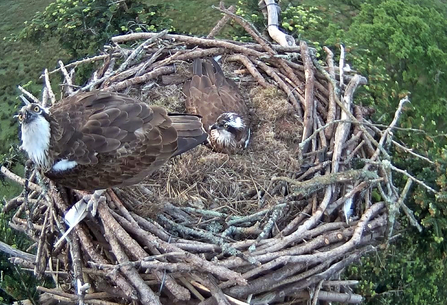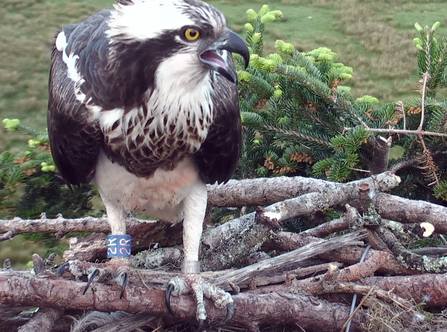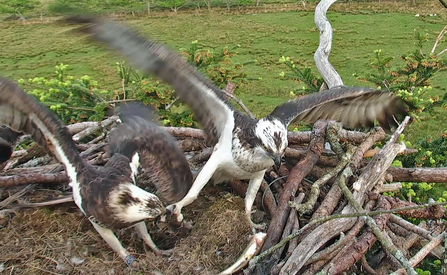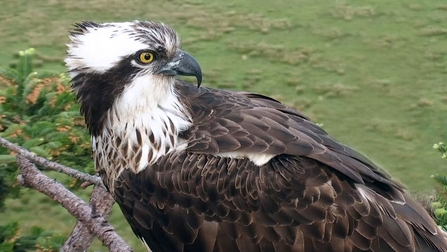Last Friday night through to Saturday morning, 13th - 14th May, something quite astonishing happened on the Glaslyn nest.
Ten days after her first touchdown on the Glaslyn nest, Clarach landed again. So, nothing unusual in itself here; the remarkable thing was the way both the Glaslyn breeding ospreys reacted to her. Treating her not as an intruder, but instead as a bird to be tolerated, even close up and despite having two eggs to incubate and protect from harm.
The Glaslyn female continues to incubate her two eggs, completely unmoved by Clarach's presence





